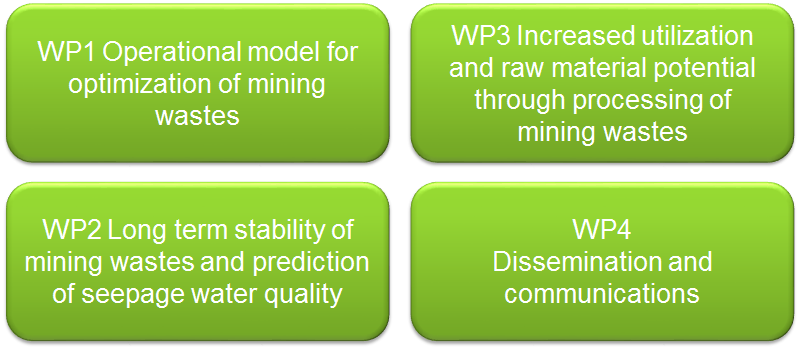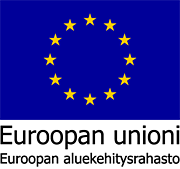Briefly about KaiHaMe- project
Management of mining wastes
Management of mining wastes is one of the primary challenges of sustainable mining due to their large amounts and potential long-term generation of low quality mine drainage. Only a small part of excavated ores can usually be utilized and the rest of the material is disposed as a waste, i.e. as waste rocks or tailings. This is especially true for the gold and base metal ore deposits, in which the waste materials also usually are acid producing, and prone to generate drainage waters with elevated metals and sulphate. Long-term management of these wastes in an environmentally and geotechnically acceptable manner is costly and requires large areas. Disposal of wastes may often also mean squander of natural resources, if only the most obvious commodities are utilized from the ore. Thus, new methods and approaches to promote eco-efficient use of mineral resources are needed.
The project “Mining waste management methods”, KaiHaMe, develops tools for the valorization and management of mining wastes and for the prediction of their discharge quality. A one-door service for the mining operators will be developed to combine and optimize mineral processing and environmental assessment. The focus of the KaiHaMe project is particularly on the gold and base metal ore deposits.
The overall objectives of the KaiHaMe project are:
- To decrease the amounts of disposed waste and their environmental impacts
- To decrease the amounts of hazardous waste
- To increase raw material value and eco-efficient use of excavated ores
- To promote sustainable mining
The project consists of four work packages, presented in Figure 1.

Figure 1. KaiHaMe project is comprised of four work packages.
The approaches used in the project include:
- Develop an operational model for the optimal use of wastes to enhance material eco-efficiency and to provide a one-door service for the mining sector. The model combines raw material aspects and environmental characterization of wastes (WP1)
- Review data on modelling tools applied for the prediction of waste discharge quality. Make a proposal on suitable tools for predicting discharge quality in the Nordic conditions (WP2)
- Study how to optimize the use and environmental properties of As containing tailings with beneficiation. Filled-in-lysimeters will be used to evaluate leaching properties and long-term performance of the tailings in a cover structure (WP3)
- Seek new options for the use of non-inert waste rocks at mine sites. Filled-in-lysimeter tests are used to test weathering behaviour of non-inert waste rocks and applicability of waste rocks in mine site construction (WP3)
- Disseminate generated knowledge through workshops, publications and Wiki (WP4).
The results of the project will be published in the report series of the Geological Survey of Finland (GTK) and summaries of the results will be presented at the KaiHaMe project webpages.
Link for the Summaries and results.
KaiHaMe project started in May 2015 and will continue until the end of April in 2018. It is funded by the European Regional Development Fund, GTK, Boliden Kevitsa Mining Oy, FQM Kevitsa Mining Oy, Kemira Oyj, and Endomines Oy.






